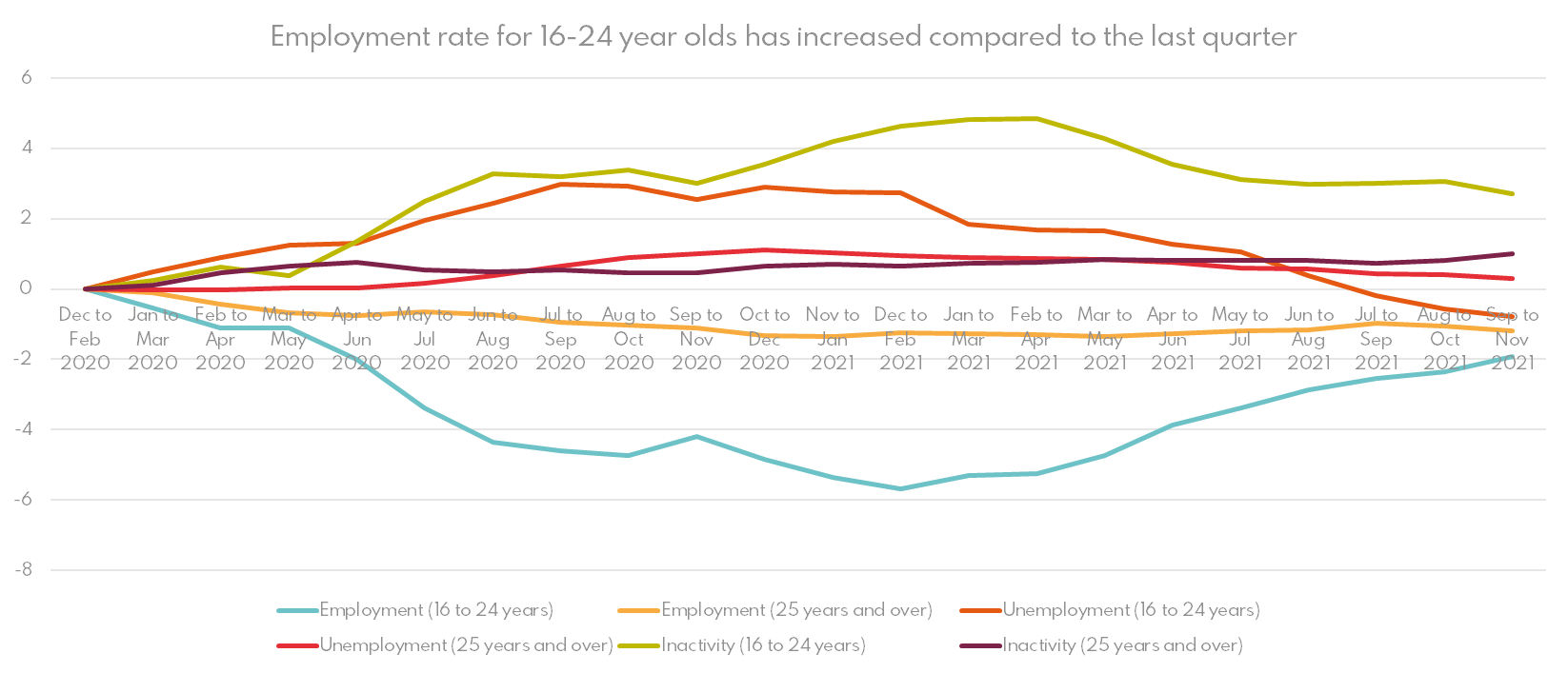Rise in long-term unemployed young people
Jan 18, 22
The employment rate for young people, aged 16-24 years, has increased compared with the previous three-month period and the unemployment rate for young people has returned to pre-coronavirus levels.
Young people were one of the hardest hit during the pandemic, and it’s good news to see the unemployment rate for young people return to previous levels. However, inactivity is still high, and employment levels have not returned to its pre-coronavirus levels. Long-term unemployment for 18–24-year-olds has increased from 20.3% to 25% (from 77,000 to 89,000 young people). There was a rise in long term unemployed 18–24-year-olds who have been unemployed for over 24 months, from 18,000 to 24,000.
Furthermore, differences in employment and economic activity continues to deepen for many young people. For young people out of education the inactivity rates have increased over the last quarter. For 16–17-year-olds out of education, there was a significant increase in inactivity rates from 47.1% to 54.1%. Whereas for 16–17-year-olds in full time education, there was a similar decline in inactivity from 73.8% to 72.5% and rise in employment from 20.1% to 21.7%. The unemployment rates are down for those groups, but for different reasons. For those in education, the decline in unemployment rate is matched with an increase in employment rates. For those out of education, with the decline in unemployment comes an increase in economic inactivity.
For 18–24-year-olds, this narrative continues, with employment rates for those in full time education rising to 35.9% and inactivity for those out of education rising to 15.7% as unemployment declines from 9.8% to 9.2%. The divide is quite pronounced when looking at the employment changes for young men and young women. For men, who are 18-24 years and out of education, there was a significant drop in employment (from 77.1% to 75.6%) and a similar increase in inactivity (from 13.7% to 15.2%. The unemployment rate increased marginally, from 10.6% to 10.9%, and therefore many previously employed 18–24-year-old men, who are not in full time education, are now economically inactive.
There was not a similar change reported for women, where instead the employment rate for 18–24-year-olds not in full time education increased from 76.1% to 77.6% and unemployment rates decline from 8.8% to 7.3%. This is very similar for women who are in full-time education. It is important to understand what is holding back young people who are not in education from finding employment opportunities.
In context of other overall labour market evidence, such as a drop in real wages, an emerging cost of living crisis, and a clear labour shortage (due to the record levels of vacancies), it is concerning that young people out of education are still experiencing an increase in economic inactivity rates. This continued polarisation is holding many young people back from opportunities and it is important to address this, so they are not left behind.